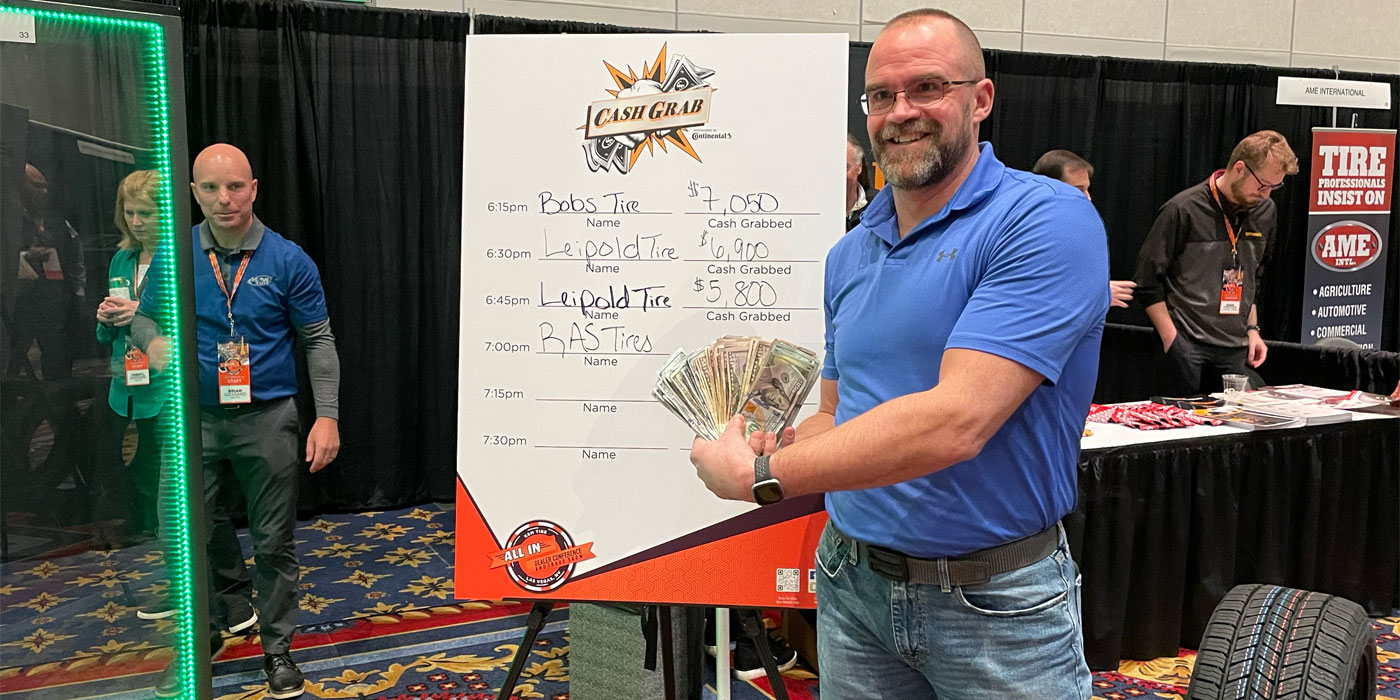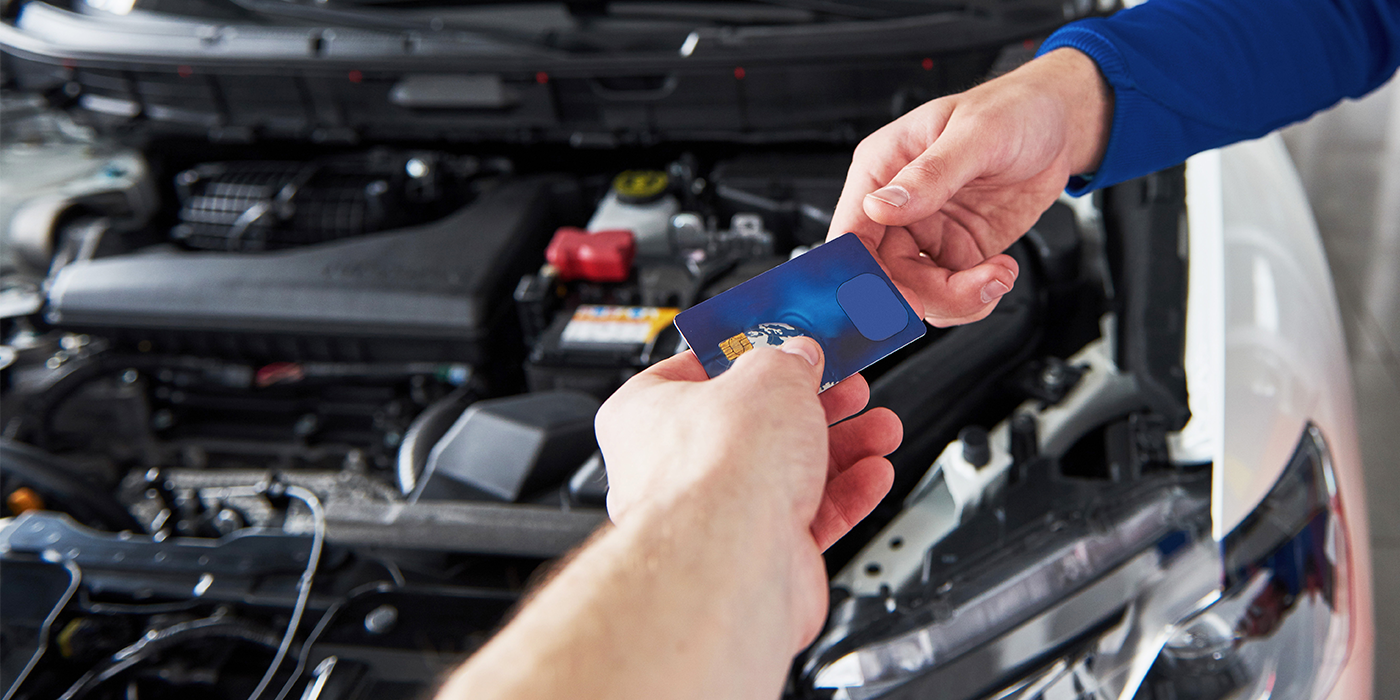Case 1: Change The Air in There
When dealers consider tire inflation as a potential source of added profits, most immediately think they should start charging for air. This ploy became popular among self-serve gas stations and a few dealers, and instantly angered consumers who couldn’t understand why the substance they freely breath should cost anything.
But there’s another inflation option available that can and should be charged for because of the benefits claimed. And it could potentially position you as your customers’ new best friend.
Initially viewed as a cost-saving option for truck fleets, the use of nitrogen instead of air to inflate passenger and light truck/SUV tires is gaining some attention Ð especially with renewed consumer concern over tire safety.
Now, on the commercial side, some majors have insisted that the potential benefits of nitrogen are contingent on an almost "perfect world" tire scenario Ð tires that are well-maintained, with regular pressure checks and clean wheels but none have dismissed the concept.
On the consumer side, however, heightened tire safety and inflation awareness can help make nitrogen’s claimed benefits a compelling selling point, according to Nick Verini, president of Nitronics Systems. The Lafayette, Colo.-firm designs, manufacturers and markets nitrogen tire inflation systems.
Matter of Education
"We see nitrogen tire filling as a great opportunity for dealers in that the equipment is now relatively inexpensive," said Verini. "We think real demand will come as people get educated on the benefits of putting nitrogen in the tires instead of wet air."
Because nitrogen won’t permeate through a tire’s inner liner as quickly as oxygen, said Verini, a tire will hold proper inflation pressure longer. Even in optimum conditions, a passenger or light truck/SUV tire will lose one to two pounds of inflation pressure per month. Nitrogen, by contrast, permeates at a rate 30-40% slower than air.
And because nitrogen is dry, compared to even well-filtered compressed air, nitrogen-filled tires are less susceptible to moisture related damage, he said. As Verini pointed out, with so many tires being improperly repaired or suffering damage the consumer may not even suspect, many tires suffer moisture-induced belt rust Ð and worse.
Plus, because of the gas’ composition, nitrogen-filled passenger and light truck/SUV ires run cooler than air-filled units, said Verini. "We all heard a lot last year about the effects of heat on tires," he said.
Cheaper and Better
Nitrogen for tire inflation is not a new concept. Race drivers have been using it for years. But race teams were less concerned about totally purging their tires of all oxygen.
Until recently the equipment needed to completely empty a tire of all traces of moisture-laden air and refill it with clean nitrogen was quite expensive.
But today, microtechnology has allowed both the size of the equipment and the price tag to shrink to profit-potential levels.
Nitronics offers a number of inflation systems, ranging from cylinder-based tire filling stations that run between $1,500 and $3,000, to units with a built-in nitrogen generator that cost more.
"We have two levels of basic filling stations," Verini said, "and the larger one can do several tires at once, and has a fast-purge feature. The advantage is the larger unit is faster, and uses less nitrogen to do the conversion. Both require cylinders.
Combining the right proportion of compressed air with electricity results in the production of nitrogen, and this chemical magic is the basis for Nitronics’ nitrogen generator-based inflation stations. Designed for high volume operations, like truck fleets, these systems provide an unlimited supply of fresh, dry nitrogen on demand.
Out With The Old
Purging a tire of all its air is key to realizing benefits from using nitrogen, Verini said. If any air is left in the chamber, some of the key benefits of using nitrogen are totally lost.
"Our smaller tire filling stations feature either a pressure cycle system or a fast-purge device. The software that runs the filling stations makes sure all the air is purged out.
"You could try to purge a tire manually and convert it over from air to nitrogen, just using a pressure gauge and a hose hooked up to a cylinder with a regulator. But it’s fairly inaccurate trying to do it that way. That’s why we have a microprocessor that runs both systems. It ensures that all the oxygen is gone."
Dollars and cents-wise, Verini admits that nitrogen could be a tough sell, even to the most safety-conscious consumer. "It very much depends on what the market will bear, and on what consumers are willing to pay," he said.
"I’ve seen dealers charge everything from $1 a tire to $3 a tire to convert them from oxygen. I think that even if you charged $1.50 a tire, a dealer could realize pretty quick pay back."
Sales and resulting profits are also a function of how well a dealer sells the service, and what percentage of potential customers are convinced that nitrogen is the way to go.
"Our experience is a dealer could get anywhere between 20% and 80% of their customers converted, depending on how good a job they do educating people," Verini said.
New tire customers, he noted, tend to make the best prospects. "They have bought new tires and are more interested in getting the most out of them."
Some dealers may opt to add nitrogen filling as a value-added service, an extra benefit they give their customers in the hopes that such goodwill will keep them happy and coming back for future tire and vehicle service, he said.
To help educate consumers, Nitronics has created some POP materials for tire dealers, including tri-fold pamphlets. Its Web site at www.nitronics.com provides details on its various inflation systems, and additional materials that can be used in sales.
Future in North America
Thus far, Nitronics has enjoyed most of its nitrogen-in-tires success in Europe, Asia and South America, Verini noted. And it has some installations with U.S. truck fleets, plus some on-going testing with a number of small and large fleets.
Verini sees tremendous potential on these shores, for both consumer and commercial tire applications.
"The fleet guys are excited about it," he said. "The economics work out great for fleets just based on the money they’ll save for the fairly inexpensive cost of converting their tires over.
"And I think with the whole underinflation concern among consumers because of the recall just raised people’s awareness of tires," he said.
"So we think passenger tire-wise there is a great potential because people now understand that tires can fail, they’re running underinflated, and that they likely will fail because of underinflation.
"Just as people don’t put water in their radiators anymore because they’ve learned that antifreeze provides important benefits year round, they will put nitrogen in their tires instead of air."













